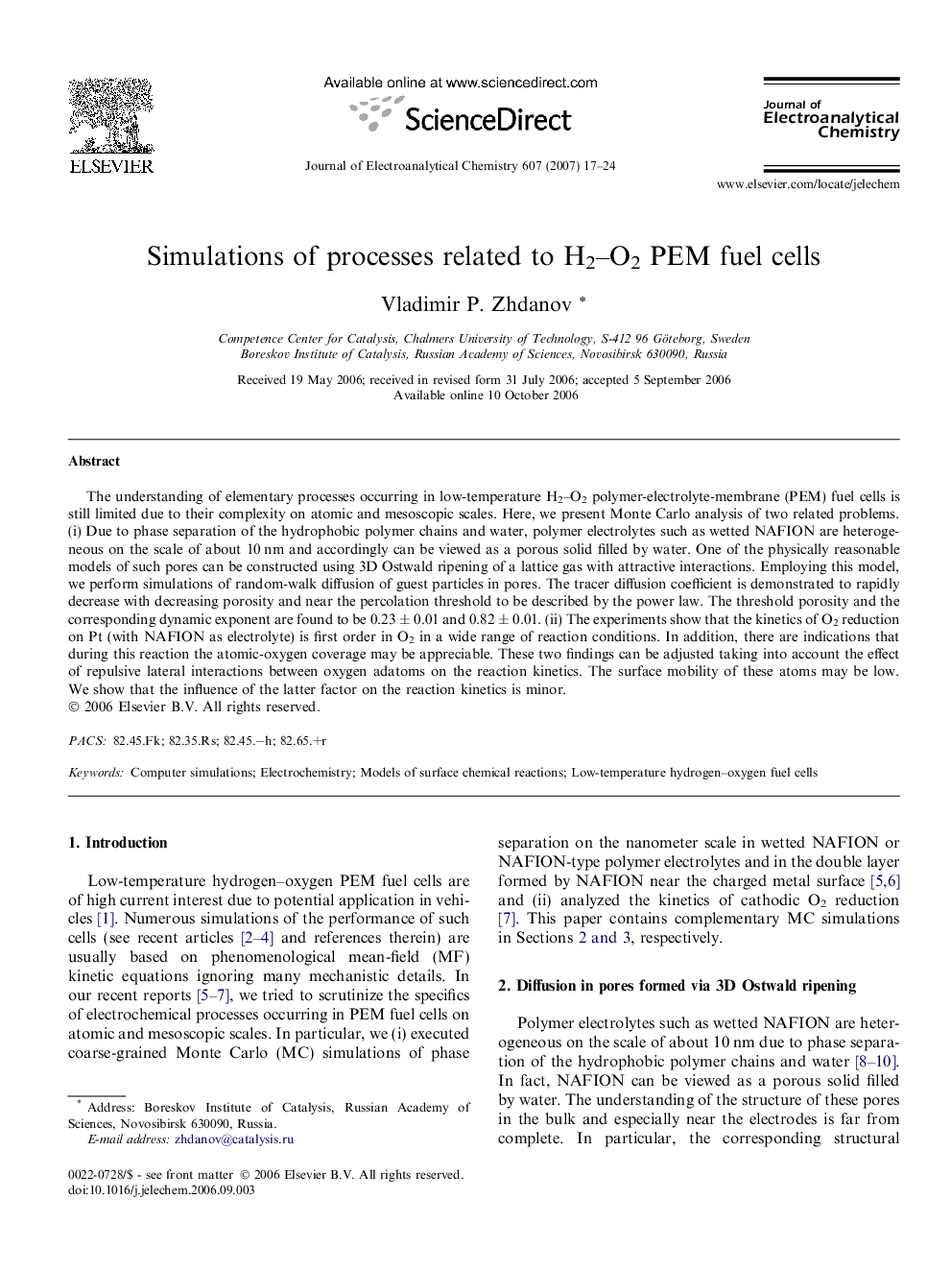| Article ID | Journal | Published Year | Pages | File Type |
|---|---|---|---|---|
| 220798 | Journal of Electroanalytical Chemistry | 2007 | 8 Pages |
The understanding of elementary processes occurring in low-temperature H2–O2 polymer-electrolyte-membrane (PEM) fuel cells is still limited due to their complexity on atomic and mesoscopic scales. Here, we present Monte Carlo analysis of two related problems. (i) Due to phase separation of the hydrophobic polymer chains and water, polymer electrolytes such as wetted NAFION are heterogeneous on the scale of about 10 nm and accordingly can be viewed as a porous solid filled by water. One of the physically reasonable models of such pores can be constructed using 3D Ostwald ripening of a lattice gas with attractive interactions. Employing this model, we perform simulations of random-walk diffusion of guest particles in pores. The tracer diffusion coefficient is demonstrated to rapidly decrease with decreasing porosity and near the percolation threshold to be described by the power law. The threshold porosity and the corresponding dynamic exponent are found to be 0.23 ± 0.01 and 0.82 ± 0.01. (ii) The experiments show that the kinetics of O2 reduction on Pt (with NAFION as electrolyte) is first order in O2 in a wide range of reaction conditions. In addition, there are indications that during this reaction the atomic-oxygen coverage may be appreciable. These two findings can be adjusted taking into account the effect of repulsive lateral interactions between oxygen adatoms on the reaction kinetics. The surface mobility of these atoms may be low. We show that the influence of the latter factor on the reaction kinetics is minor.
